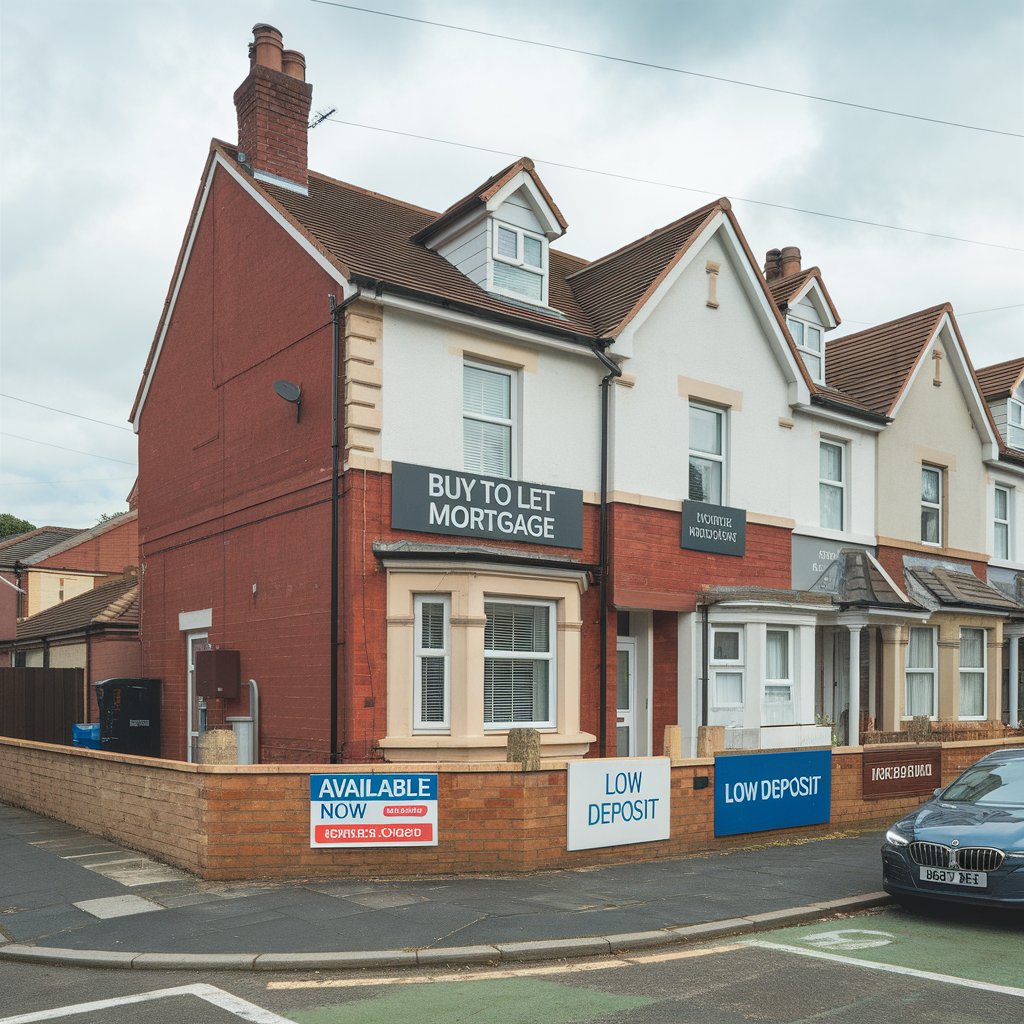Remortgaging for home improvements provides UK homeowners with a strategic method to access property equity, funding significant renovations that enhance both living conditions and property value. This approach involves replacing your existing mortgage with a new arrangement that releases additional funds, typically at competitive interest rates that reflect the secured nature of the lending against your property.
The UK remortgaging market offers various options for homeowners seeking to fund home improvements, from kitchen renovations and bathroom upgrades to extensions and energy efficiency improvements. Understanding the process, requirements, and alternatives ensures that homeowners make informed decisions that align with their financial circumstances and renovation objectives.
Understanding UK Remortgaging for Home Improvements
Remortgaging for home improvements involves securing a new mortgage that exceeds your current outstanding balance, with the additional funds available for renovation projects. This process allows homeowners to leverage the equity built up in their property over time, converting it into readily available cash for improvement works that can enhance both lifestyle and property value.
The UK regulatory framework, overseen by the Financial Conduct Authority, ensures that lenders conduct thorough affordability assessments when considering remortgage applications for home improvements. These assessments evaluate not only your ability to service the increased mortgage payments but also consider the potential value enhancement that proposed improvements might bring to the property.
Most UK lenders offer remortgage products specifically designed for home improvements, with loan-to-value ratios typically ranging from 75% to 90% depending on your circumstances and the lender’s criteria. The amount you can borrow depends on your property’s current value, existing mortgage balance, income, credit history, and the lender’s assessment of the proposed improvement works.
Equity Release Process and Requirements
The equity release process begins with establishing your property’s current market value through professional valuation, which determines the total equity available for potential release. UK homeowners typically need to retain at least 10% to 25% equity in their property after remortgaging, depending on the lender’s requirements and the specific mortgage product chosen.
Lenders assess applications based on comprehensive affordability criteria, including income verification, credit history evaluation, and detailed review of existing financial commitments. Self-employed applicants may face additional documentation requirements, including business accounts and tax returns covering the previous two to three years, which can extend the application timeline.

The amount of equity you can release generally ranges from £10,000 to several hundred thousand pounds, depending on your property value and existing mortgage balance. However, lenders typically impose minimum release amounts, usually starting from £25,000, making this option most suitable for substantial home improvement projects rather than minor renovations.
Property characteristics significantly influence the equity release process, with lenders preferring standard construction properties in desirable locations. Unusual property types, leasehold arrangements with short remaining terms, or properties in declining areas may face additional restrictions or require specialist lender consideration.
Types of Home Improvement Projects
Kitchen renovations represent one of the most popular uses of remortgage funds, with comprehensive refurbishments typically costing between £15,000 and £50,000 depending on the property size and specification level. These projects often provide excellent returns on investment, particularly in areas where modern kitchens are highly valued by potential buyers.
Bathroom improvements, including en-suite additions and family bathroom upgrades, typically require investments of £8,000 to £25,000 per room. These improvements not only enhance daily living comfort but also address practical needs that can significantly impact property marketability and value.
Home extensions, including single-storey rear extensions, loft conversions, and conservatories, represent substantial investments that can transform living space and property value. Costs typically range from £20,000 for basic conservatories to £100,000 or more for complex two-storey extensions, making remortgaging an attractive funding option for these major projects.
Energy efficiency improvements, including new heating systems, insulation upgrades, and window replacements, offer both immediate comfort benefits and long-term running cost savings. These improvements often qualify for government grants or incentives, which can be combined with remortgage funding to maximise the overall investment value.
Financial Considerations and Costs
Interest rates for remortgage products used for home improvements typically align with standard residential mortgage rates, often ranging from 2% to 6% depending on market conditions, your credit profile, and the loan-to-value ratio. These rates are generally significantly lower than personal loans or credit cards, making remortgaging an attractive option for substantial improvement projects. This approach can also help homeowners achieve lower monthly payments while funding their renovation works.
The total cost of remortgaging includes various fees and charges that must be factored into your financial planning. Arrangement fees typically range from £500 to £2,000, whilst valuation costs vary from £250 to £1,500 depending on property value and complexity. Legal fees for remortgaging usually cost between £500 and £1,500, though some lenders offer free legal services as part of their mortgage packages.
Early repayment charges on your existing mortgage can significantly impact the overall cost of remortgaging for home improvements. These charges typically apply if you exit a fixed-rate or discount period early, with costs often calculated as a percentage of the outstanding balance, potentially reaching several thousand pounds.
The extended mortgage term resulting from remortgaging for home improvements means that whilst monthly payments may remain manageable, the total interest paid over the mortgage lifetime will increase. Homeowners should carefully consider this long-term cost against the immediate benefits and potential property value enhancement from the improvement works.
Application Process and Timeline
The remortgage application process for home improvements typically takes 6 to 12 weeks from initial application to fund release, though this timeline can vary based on the complexity of your circumstances and the chosen lender’s efficiency. Starting the process early allows sufficient time for planning and ensures that funds are available when needed for improvement works.
Initial preparation involves gathering comprehensive financial documentation, including recent payslips, bank statements, tax returns for self-employed applicants, and details of the proposed improvement works. Many lenders require detailed quotations from contractors and may request architectural plans for substantial projects such as extensions.
Property valuation represents a crucial stage in the process, with lenders typically arranging automated or desktop valuations for straightforward cases. More complex properties or substantial improvement projects may require detailed surveys, which can extend the timeline but provide more accurate assessments of both current and post-improvement values.
The underwriting process involves detailed assessment of your financial circumstances, credit history, and the proposed improvement works. Lenders may request additional information or clarification during this stage, making prompt response to queries essential for maintaining progress towards completion.

Alternative Financing Options
Personal loans for home improvements typically offer faster access to funds, with applications often processed within days rather than weeks. However, interest rates are generally higher than remortgage products, typically ranging from 3% to 15% depending on your credit profile and the loan amount, making them more suitable for smaller projects.
Secured loans against your property provide an alternative to remortgaging whilst maintaining your existing mortgage arrangement. These products typically offer competitive interest rates and flexible terms, though they create a second charge against your property that must be considered in your overall financial planning.
Home improvement credit cards and specialist finance products offered by retailers and contractors provide convenient funding for specific projects. However, these options often carry higher interest rates and may include promotional periods that require careful management to avoid significant cost increases.
Government grants and incentives for energy efficiency improvements, accessibility modifications, and heritage property restoration can provide valuable funding supplements. These programmes often have specific eligibility criteria and application processes, but can significantly reduce the overall cost of qualifying improvement works.
Risk Assessment and Management
The primary risk of remortgaging for home improvements is the potential for property repossession if you cannot maintain mortgage payments on the increased borrowing. This risk is mitigated through careful affordability assessment and ensuring that monthly payments remain comfortably within your budget, including allowance for potential interest rate increases.
Property value fluctuations can impact the effectiveness of using remortgage funds for home improvements, particularly if local market conditions change significantly during or after the improvement works. However, well-planned improvements typically enhance property value regardless of broader market movements, providing some protection against this risk.
Construction and contractor risks associated with home improvement projects can impact both costs and timelines, potentially affecting your ability to manage the remortgage arrangements effectively. Careful contractor selection, comprehensive contracts, and adequate insurance coverage help mitigate these risks and protect your investment.
Interest rate changes during the improvement process can affect both the cost of borrowing and the overall project economics. Fixed-rate remortgage products provide protection against rate increases during the initial period, whilst variable rate products offer potential benefits if rates fall but expose you to payment increases if rates rise.

Professional Advice and Planning
Professional mortgage advice is particularly valuable when considering remortgaging for home improvements, as advisers can assess the full range of available products and identify the most suitable options for your specific circumstances. Experienced advisers understand the different lender criteria and can help navigate complex applications or unusual property situations.
Financial planning for home improvement remortgaging should consider both the immediate project costs and the long-term implications of increased borrowing. This includes assessing the impact on your overall financial position, retirement planning, and future property plans to ensure that the decision aligns with your broader financial objectives.
Legal advice may be necessary for complex improvement projects, particularly those involving structural changes, planning permissions, or listed building considerations. Understanding the legal implications of both the remortgage arrangements and the improvement works helps avoid complications that could impact the project or your property rights.
Tax implications of home improvements funded through remortgaging can affect both the immediate costs and long-term financial planning. Whilst most home improvements do not qualify for tax relief, energy efficiency improvements may qualify for government incentives, and the increased property value may have capital gains tax implications if you sell the property in future.
Professional mortgage advisers provide comprehensive guidance throughout the home improvement remortgaging process, helping homeowners navigate complex financing options and secure optimal arrangements. With extensive market knowledge and personalised service, professional advisers support clients in achieving their renovation objectives whilst maintaining financial stability and maximising long-term property value enhancement.




